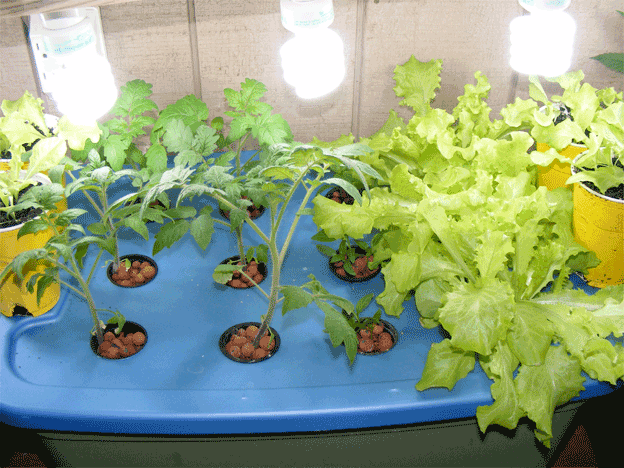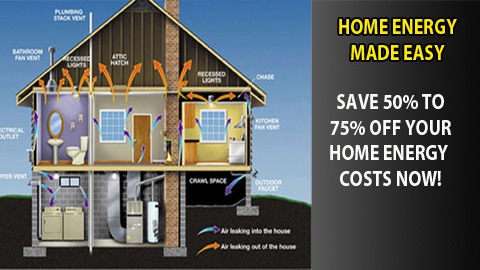
“Remember that children, marriages, and flower gardens reflect the kind of care they get.”
H. Jackson Browne

7 Reasons Why You Should Own an Hydroponic Grow System
Hydroponics, in its most basic form, is a production method in which plants are grown in a nutrient solution rather than soil. A variety of modifications on the basic hydroponic method have been done during the last few years. Although the hydroponic growing system can be used on outdoor crops, most output in the United States nowadays is done indoors or in greenhouses.
Whether plants are produced conventionally or through a hydroponic growing system, the greenhouse and its environment management system are the same. The distinction is due to the support system and the way of providing water and nutrients.
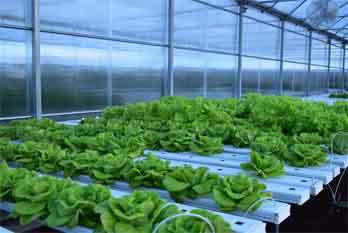
Hydroponic Grow System Pros and Cons
It has been proven that hydroponics comes with myriads of benefits. But just like in most things in life, it also has a few drawbacks. Having said that, here are some of the pros and cons of a hydroponic grow system to help you decide if the system is for you.
Pros
- Higher Plant Density - Plant density is increased since plants can be transplanted as they mature. The utilization of a growth room for germination and seedling production, as well as the spacing of certain crops in the greenhouse, reduces the average area required per plant when compared to conventional crop production with soil.
- Larger Yields - Although equivalent yields should be possible with a standard cropping scheme, reports of higher yields and better quality are prevalent with hydroponics.
- Less water consumption - When the root system is confined in a closed trough or tube, there is less evaporation, and thus less water consumption.
Cons
- High Initial Investment - Pumps, tanks, controllers, and support systems add several dollars per square foot to the original cost. A significant additional expenditure will be incurred if supplemental lighting or a growth room is installed.
- Higher energy prices - The use of pump and lamp raises the cost of power.
- More technical skills are necessary - A hydroponic growing system needs a grower with a strong chemical and plant production experience.
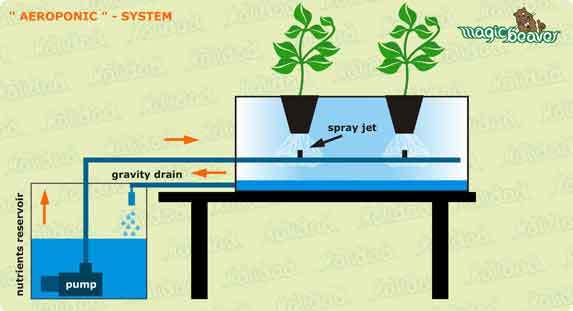
Features of a Home Hydroponic Garden
Following are the common features of a hydroponic growing system such as a home hydroponic garden:
- All hydroponic systems have a reservoir or other container, a fertilizer source (typically a solution), and, of course, water are all components.
- Many come with a grow lamp, a growing medium, and/or an air pump (if growing directly in water).
- Reservoirs or containers for home growers can range in size from small enough to grow a single herb to large enough to grow a pair of tomato plants—or even larger.
- Some hydroponic systems are intended to be used indoors, while others are intended to be used outdoors (depending on temperature and time of year).
- Although practically any crop can be produced hydroponically, leaf lettuce, tomatoes, peppers, cucumbers, strawberries, watercress, celery, and some herbs are the most prevalent. The way a crop is supported in the nutrient solution is an important component in the system design for that
- A lot of water is wasted when you grow plants in soil in the traditional manner. On the other hand, hydroponic herb plants can grow successfully even after using up to 90% less water.
- The water used in traditional gardening is not absorbed by the plants but is absorbed by the ground whereas the minerals and water used in the various hydroponic form of gardening are not wasted as they are recirculated. The water is lost only by evaporation.
DIY Hydroponic System
The most basic hydroponic systems for use at home are classified as "Deep Water Culture."
Plants are suspended over a tank of water with their roots submerged in the water, absorbing water and nutrients.
- This is the most common type of DIY hydroponic system used by small-scale farmers, such as home gardeners and school demonstration gardens.
- It is also the least expensive to operate and expand.
- You can buy a pre-made deep water culture hydroponic kit, but it is more affordable to build your own
- The container for holding water and plants in this type of hydroponic set up can be as simple as a 5-gallon bucket or a plastic storage bin. Any container that carries water will suffice for hydroponics, as long as it is clean and constructed of food-safe materials (a material that will not leach harmful chemicals into the water).
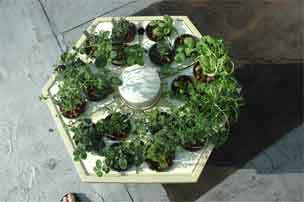
When selecting a container for your hydroponic system, keep the following in mind:
Size
- The size of your container should be determined by the size of the plants you want to cultivate. For example, if you want to grow a tomato hydroponically, consider the size of a mature tomato plant's canopy and select a container that is roughly the same size.
- The seed packet should specify the size of the plant.
- A larger container will be required if you want to grow numerous things in one container, such as multiple heads of lettuce.
Flotation Device or Lid
- Your hydroponic system's container will keep the water and nutrients, but something must support the plant. When utilizing a bucket, the most typical plant support system is simply the bucket lid with holes drilled through it for the plants.
- If you don't have a lid, you can use extruded polystyrene instead (sheets of insulation). You can either place the polystyrene sheets on top of the container or float them in the water. If you decide to float the sheets directly in the water, it's a good idea to add some extra support (such as PVC tubes) to keep the polystyrene sheet in place as the plants become heavier.
Cost, Appearance, and Space Efficiency
- If you want your hydroponic system to look more appealing than just a bucket, you can easily put a frame around it, such as the Hydroponic Salad Table.
- If you want to expand your system to have numerous containers in use at the same time, adjustable wire shelves with plastic totes or buckets on each shelf can help. These additional elements are not required and will increase the cost, but they can make your setup more efficient and appealing.
Other Components
- Tanks, pumps, and controllers are also necessary in addition to the plant support system. Concrete, plastic, and fiberglass tanks are commonly used. Submersible pumps intended for chemical solutions should be utilized since fertilizer salts will degrade water-based pumps. Controls might be as simple as a timer and manual switches or as complex as a computer that modifies the chemical content of the nutrition solution automatically.
